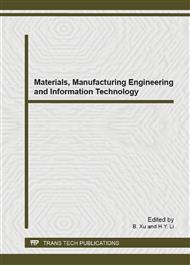p.123
p.127
p.132
p.137
p.141
p.145
p.149
p.153
p.157
Research on Food Manufacturing with S-Layer Protein of Selected Lactobacillus is Responsible for Competitive Exclusion against Human Enteropathogens
Abstract:
In this study, five selected Lactobacillus of fecal origin were investigated for their probiotic properties. They were preliminarily identified by partial 16S rDNA gene sequencing and characterized in vitro for their resistance to low pH and bile salts. Here, we assessed the adhesive properties and the ability to inhibit the adhesion and to displace pathogens of five selected Lactobacillus strains using HT-29 cells model through a process which may be related to specific components of the baterial surface. Surface-layer proteins are located in a paracrystalline layer outside the bacterial cell wall and are thought to play a role in tissue adherence. Removal of S-layer proteins from the Lactobacillus (treated with 5 M LiCl) reduced adhesion to Caco-2 cells. Under such conditions, inhibition activity was also decreased in all five strains, as revealed in competition assays, which suggested that S-layer protein had involved in the adhesion of probiotics. SDS-PAGE analysis confirmed the presence of S-layer proteins with dominant bands of was approximately 60 kDa. Our findings also indicate that the surface layer proteins contributed to its increased adhesion to the cultured cells and competitive exclusion of pathogens.
Info:
Periodical:
Pages:
141-144
Citation:
Online since:
March 2014
Authors:
Price:
Сopyright:
© 2014 Trans Tech Publications Ltd. All Rights Reserved
Share:
Citation:


